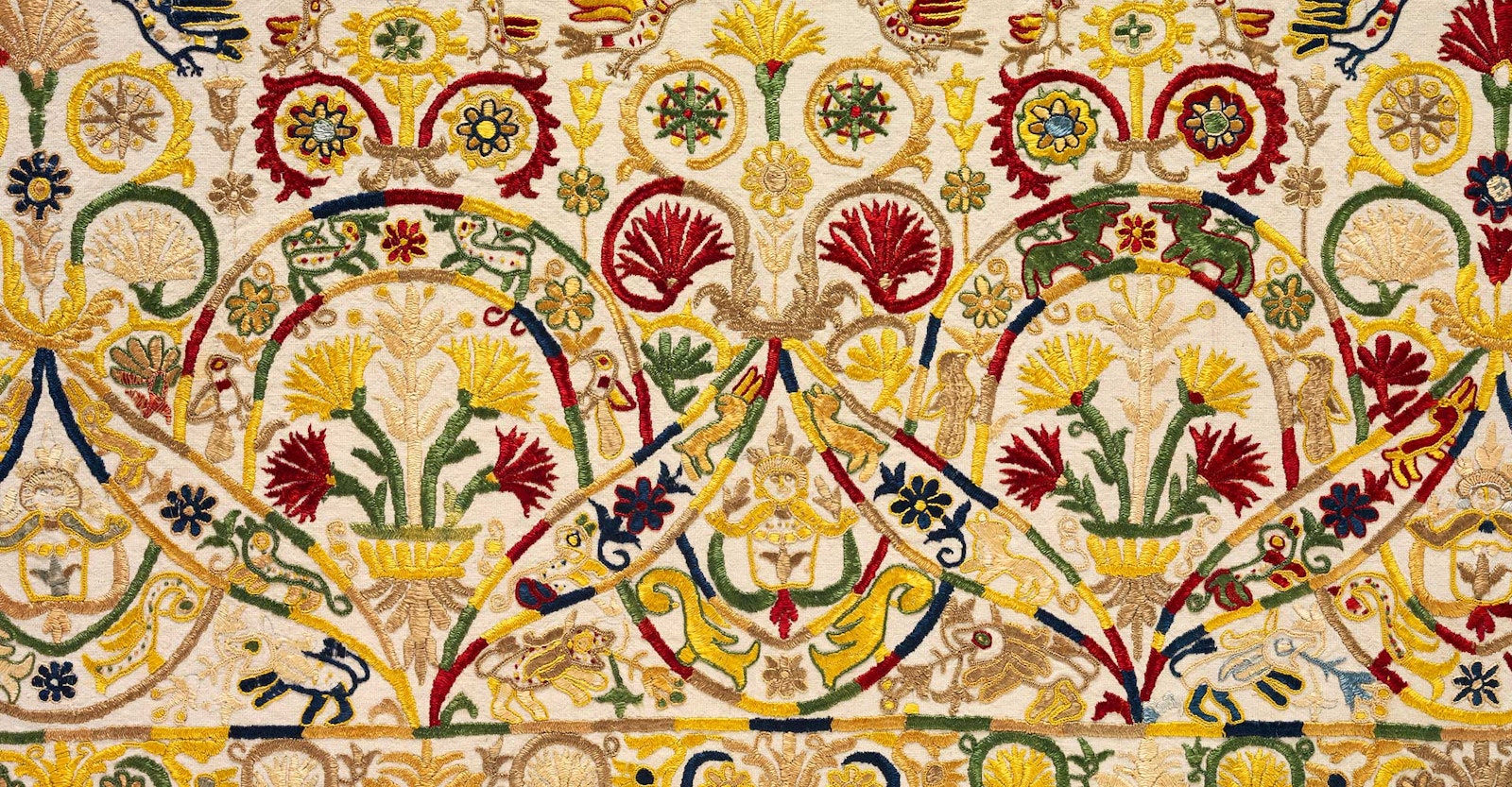In this era of the web browser, it’s sometimes easy to forget that the world is—as ever—full of loose ends. Histories can be lost and knowledge can pass out of memory. Sometimes all that might remain are pockets of stories and fragments of cloth. With the loss of their original context, these textile fragments often find new significance and purpose.
We are sometimes left to wonder who made the original textile and why it was tucked away for safekeeping. Was the small section of an embroidered hem from Crete (see photo above) saved as a way of remembering a loved one? Was it saved as a pattern reference? Maybe by cutting it from the skirt, it could be sold. Despite the missing pieces, this little textile can offer us a bounty of inspiration.

A glorious pair of gloves from Angharad Thomas, inspired by pieces in the Victoria and Albert Museum in London. Photos by Matt Graves.
In this issue of PieceWork, textile conservator Isabella Rossi explores just one of the many cases of historic textiles found intentionally concealed within walls and under floorboards of a home or structure. We hear from the Royal School of Needlework about an embroidered altar cloth that was discovered to have been a “lost dress” of Queen Elizabeth I.
Knitting researcher and traveler Irene Waggener presents important connections between two knitted belts in North Africa, seeking to fill gaps in our modern understanding of a deep history. And Helen Barbara Mawdsley shares the story of a small piece of cross-stitch that serves as a rare connection to her Hungarian heritage, and she invites you to stitch along with her.

Delicate stitching from Helen's recreation of a family treasure.
From the mundane, humble cloth of daily life to the dress of a queen, textiles can be lost, found, and celebrated by generations of needleworkers.
Kate Larson, Editor
-Our Spring issue will be available this Friday in the Long Thread Media store!

